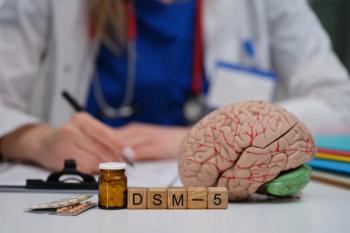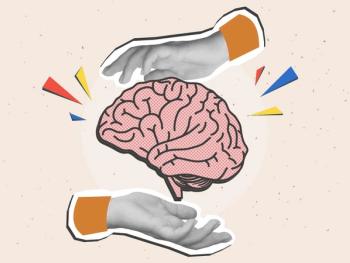
The Healing Power of Animals
How does a love of animals affect PTSD and other mental health conditions?
“Animals are the bridge between us and the beauty of all that is natural. They show us what’s missing in our lives and how to love ourselves more completely and unconditionally. They connect us back to who we are and to the purpose of why we're here." – Trisha McCagh, the “Animal Whisperer”
References to dogs being “man’s best friend” have been ubiquitous in Western culture ever since the moniker was allegedly uttered by King Frederick of Prussia in 1789. Today, it would be hard to find an individual who has not had at least 1—hopefully more—wonderful interaction with a dog, a cat, a hedgehog, or 1 of countless other animals.
What is less understood is how this innate bond between homo sapiens and animals can literally guide individuals to live healthier lives. Positively affecting subjective well-being and healthy mental functioning, animal therapy is quickly earning respect among mental health clinicians. More importantly, a growing collection of empirical research is casting it as a respected therapeutic intervention along with mainstays such as
Sigmund Freud, the pioneer of psychoanalysis, was known to have his Chow Chow, Jofi, sit in on sessions to calm patients and even identify their moods. If a patient was anxious, she would keep her distance. If they were calm, she would stay near them. “Dogs love their friends and bite their enemies, quite unlike people, who are incapable of pure love and always have to mix love and hate in their object-relations,” Freud was quoted as saying.
Modern research on animal-assisted therapy (AAT) traces its origins to the 1960s when child psychologist Boris Levinson, PhD, stumbled across the benefits of using his dog Jingles in a therapy session. In his article “The Dog as a Co-Therapist,” he tells the story of a child with whom he had not been able to build rapport.2 He noticed it was much easier to interact with the child when the dog was around.
He believed using pet therapy with children could help with diagnoses ranging from anxiety and depression to
Levinson was joined in the 1970s by Samuel Corson, PhD, who was also compiling research. Corson and his wife, Elizabeth, wrote an article in 1975 explaining how canines could be used in hospital settings.3 They followed up with more studies, such as how dogs could be used to help psychotherapists treating severely mentally ill patients in psychiatric institutions. They posited that humans who were uncomfortable with and untrustworthy of others might better connect with an animal that would accept them, unconditionally and nonjudgmentally. This could lead patients to slowly open up to their therapists, facilitating a rapport that would have been impossible without the assistance of the
Research on AAT has since become much more data-driven and evidence-based. Its positive effect on
Recently, the benefits of therapy dogs were on full display in
AAT to Treat Mental Illness
Canines are the most well-studied AAT species. Dogs are innately unselfish and love unconditionally—traits that are quite difficult to find in humans. When it comes to PTSD, dogs are trained to help military service members, survivors of sexual assault, and other individuals who have experienced severe
Modern research on AAT provides many objective, measurable, and statistically significant findings.4 It is not as well-known as other therapies, such as CBT, dialectical behavior therapy (DBT), and cognitive processing therapy (CPT); however, AAT offers a variety of techniques that are poised to grow in popularity among therapists looking to incorporate different approaches.
Animal-Assisted Psychotherapy (AAP)
This type of animal therapy has largely been developed and used in Israel. In 2013, Nancy Parish-Plass wrote the book Animal-Assisted Psychotherapy: Theory, Issues, and Practice, which paved the way for a structured approach to using animals in therapy sessions.5 She also founded the Israeli Association of Animal-Assisted Psychotherapy to encourage more mental health clinicians to practice AAP.
Her belief is that introducing the dog at the outset of therapy can help build rapport and lessen presenting symptoms. This is particularly beneficial when treating trauma patients who find it difficult to connect with others, including their clinician. Therapy animals help facilitate techniques designed to give patients the courage to do the deeper work. These can include:
-Linking mindfulness-based exercises to the calming effect of petting an animal
-Having the patient focus on the therapy animal if they feel a strong transference of feelings toward the clinician
-Encouraging a patient to tell the therapy animal a secret they are not yet ready to divulge to the clinician
Equine Therapy
Hippocrates promoted the benefits of horseback riding as far back as 460 BC. Today, research indicates that it is an effective way to decrease symptoms of
It is interesting to note that AAT can be used multiculturally without the need to adjust how it is applied to different ethnic groups. This makes it unique among other treatment modalities. A 2021 metanalysis suggested that AAT in India, a country of roughly 1.4 billion people, may be equally effective as it is in Western cultures. The researcher was able to posit future uses of the modality and ways to measure its effectiveness. In calling for more research, education, and policy support, she noted that, “animal-assisted therapy today is witnessing a paradigm shift.”7
Service Dogs
The Americans with Disabilities Act (ADA) defines a service animal as “trained to do work or perform tasks for an individual with a disability.” This differs from an emotional support or therapy animal, which an individual may want or need to help them feel safe. Although there is no official registry for either type of assistance animal, the “service animal” designation has the backing of ADA. This means that it is federally illegal for an individual to be denied taking their trained dog with them.
Service dogs that help the visually impaired are the most common type of service animal. These dogs are trained to guide individuals around dangerous objects, to identify doorways and stairs, and to help them walk through crowds. They are also trained to communicate when they need to potty. This helps the person who is visually impaired avoid any embarrassing situations, especially when frequenting a location honoring their rights.
Service animals are often used to protect individuals with epilepsy from the dangers of seizures. These dogs are trained to alert a person that a
Unlike a therapy dog, service dogs are trained to focus solely on their human and to not be distracted by those around them. They often will wear a vest stating that they are not to be petted or given any type of treat by anyone other than their owner. Basically, even though a service dog may look like they would love a scratch behind the ear, they are at work performing a crucial job that literally could save their human’s life.
AAT in Action
Just 30 minutes west of San Antonio in the beautiful Texas Hill Country is Warrior’s Heart, a facility that works to rehabilitate individuals grappling with PTSD stemming from their military service. It also provides residential substance-use interventions to active-duty military members, veterans of the armed forces, and first responders who have sacrificed to help their fellow citizens. It is here that the therapeutic bond of canine and human can be observed.
Among Warrior’s Heart’s great programming options exists an opportunity to care for dogs that are going through their own hardships. The program takes in rescue dogs, some on the brink of death, and feeds, shelters, and provides medical treatment to help them get back on their paws. Patients can help with this process while also receiving the love and affection these animals naturally seek to give. In a kind of beautiful symbiosis, patients learn how to care for something outside of themselves while working to rehabilitate their mental health. For many, this experience allows them to reconnect with others and get their feet back on the ground or back in their combat boots.
Residents might even adopt the dog they helped nurse back to life. Some dogs go on to receive free training as a service or emotional support dog. As one Vietnam veteran at the facility perfectly summed up when he described Chloe, a Great Dane who arrived at the facility severely malnourished: “We both got here at the same time and have gotten better together.” Today, Chloe looks as healthy as a horse and is almost as large as one. The patient shed a tear as he shared how she was a benefit of the program he would miss the most. “I hate to leave her, but I just don’t have the room for her in my little yard,” he said.
AAT Certification Programs
Programs to train AAT therapists are becoming easier to find in the United States. Universities across the country as well as independent licensing organizations have sprung up offering a variety of training services.
Prior to completing most certified programs, a dog must complete the American Kennel Club’s Canine Good Citizen exam. This quick test ensures that a potential therapy dog can interact appropriately with people and be well-behaved. Dogs must show they can complete basic tasks, such as accepting petting, sitting when asked, following their owner without tugging on their leash, and not getting easily overwhelmed in busy environments. Once this is completed, a person looking to become a certified pet therapist can begin the journey down a very rewarding vocational path.
Texas State University in San Marcos, Texas, offers the Animal-Assisted Counseling Academy, a program that is accredited by the American Counseling Association. Here, potential AAT therapists go through 40 hours of continuing education credits with their canine partner to learn different techniques to serve a variety of populations.8 Additionally, there are many certification programs online, although they may not offer the in-depth feedback of a hands-on program.
Concluding Thoughts
AAT is a therapeutic intervention that is only beginning to gain momentum in helping a wide variety of patients. From assisting veterans with PTSD symptoms learning to trust others to helping children with epilepsy complete daily tasks, dogs and horses are being used more and more. Equestrians around the world are using horses to help people heal their traumas and conquer their fears.
For many, being around kind animals provides a type of warmth that cannot be easily matched by other people. Combining this powerful connection with the transformative effects of psychotherapy can help individuals receiving therapy move toward their goals.
Mr Zaiontzis a board-certified counselor with
References
1. Trujillo KC, Kuo GT, Hull ML, et al.
2. Levinson BM. The dog as a "co-therapist." Mental Hygiene. 1962;46:59-65.
3. Corson SA, Corson EO, Gwynne PH, Arnold LE.
4. Nimer J, Lundahl B.
5. Fine AH. Handbook on Animal-Assisted Therapy Foundations and Guidelines for Animal-Assisted Interventions. Elsevier Science & Technology; 2015.
6. Johnson RA, Albright DL, Marzolf JR, et al.
7. Narvekar HN.
8. Animal-Assisted Counseling Academy. Texas State University. Accessed October 10, 2022.
Newsletter
Receive trusted psychiatric news, expert analysis, and clinical insights — subscribe today to support your practice and your patients.















